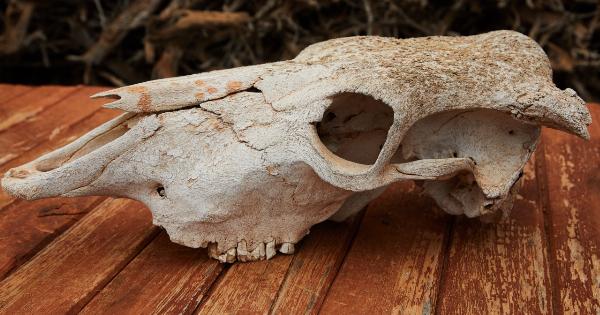Fissures, also known as cracks or fractures, play a crucial role in various natural and man-made formations. These openings not only create unique geological landmarks but also have significant implications in our understanding of Earth’s history.
Fissures occur due to various processes, including tectonic activity, erosion, and stress accumulation. In this article, we will delve into the concept of fissures and explore the role of “defending bones” in their formation.
1. Understanding Fissures
Fissures can be defined as long, narrow openings or gaps that occur in rock formations, the Earth’s crust, or various structures.
They range in size from tiny cracks to large-scale rifts, and their formation can be attributed to a multitude of factors. Tectonic movements, such as the shifting of tectonic plates, can lead to the creation of fissures, as can the erosion caused by water, wind, or ice.
2. The Role of Defending Bones
The term “defending bones” refers to specific structures within the Earth’s crust or other formations that act as pillars of support, reinforcing and defending against the formation or expansion of fissures.
Defending bones can be made of different materials, with bones being a particularly apt analogy to understand their role.
3. Types of Defending Bones
There are five primary types of defending bones that contribute to the prevention or limitation of fissure formation. These include:.
3.1. Fault Lines
Fault lines are significant breaks or fractures in the Earth’s crust that occur due to intense tectonic forces.
While they are technically formed by the movement of tectonic plates, fault lines can be considered defending bones as they absorb stress and prevent extensive fissures from forming in neighboring areas.
3.2. Reinforcing Shield Volcanoes
Shield volcanoes, with their broad, flat profiles, can act as defending bones by providing support against fissures. The lava flows emitted by shield volcanoes are composed of basalt, a type of volcanic rock known for its strength and durability.
These lava flows can solidify and create a protective layer that strengthens the surrounding area, minimizing the risk of fissure formation.
3.3. Igneous Intrusions
Igneous intrusions occur when molten rock (magma) seeps into existing formations, such as sedimentary rock or pre-existing volcanic rocks. The intrusion of magma often solidifies and forms hardened structures known as plutons or dikes.
These intrusive bodies act as defending bones, fortifying the surrounding rock and reducing the likelihood of fissure development.
3.4. Mineral Veins
Mineral veins, also known as ore veins, are localized concentrations of minerals within rock formations. These veins are often formed by hydrothermal processes, where hot fluids carry dissolved minerals and deposit them within fractures.
The minerals present in these veins can act as defending bones, reinforcing the surrounding rock and preventing further fissure propagation.
3.5. Human-Engineered Structures
In addition to naturally occurring defending bones, human-engineered structures can play a role in preventing or controlling fissure formation.
Infrastructure such as dams, tunnels, and bridges are strategically designed to withstand geological stresses, acting as man-made defending bones that ensure the stability and integrity of the surrounding environment.
4. The Significance of Defending Bones
Understanding the role of defending bones is crucial for several reasons. Firstly, it allows us to comprehend the factors that influence the formation and prevention of fissures.
By studying these defending bones, we can gain insight into the geological history of an area, identifying patterns of stress accumulation and release.
Secondly, defending bones provide structural stability to rock formations and man-made structures alike.
This knowledge is essential for engineering projects, as it helps in designing and constructing robust structures that can withstand natural forces over extended periods.
Lastly, assessing the condition and integrity of defending bones in areas prone to fissures can support hazard mitigation efforts.
By identifying weak or compromised defending bones, appropriate measures can be taken to reinforce or repair them, reducing the risk of catastrophic events.
5. Maintaining Healthy Defending Bones
Just like our physical bones, defending bones require care and maintenance to ensure their effectiveness.
Continuous monitoring and evaluation of the conditions of fault lines, shield volcanoes, igneous intrusions, mineral veins, and man-made structures allow for prompt intervention if deterioration is detected. This proactive approach can help minimize the potential damage caused by fissures and promote overall stability.
Conclusion
Fissures are fascinating natural phenomena that can provide valuable insights into the geological history of our planet.
The concept of defending bones further enhances our understanding by shedding light on the mechanisms that prevent or limit fissure formation.
From fault lines to mineral veins and human-engineered structures, the presence of defending bones plays a critical role in supporting stability.
By recognizing the significance of these defending bones and maintaining their health, we can effectively manage the potential risks associated with fissures and promote a safer living environment.































